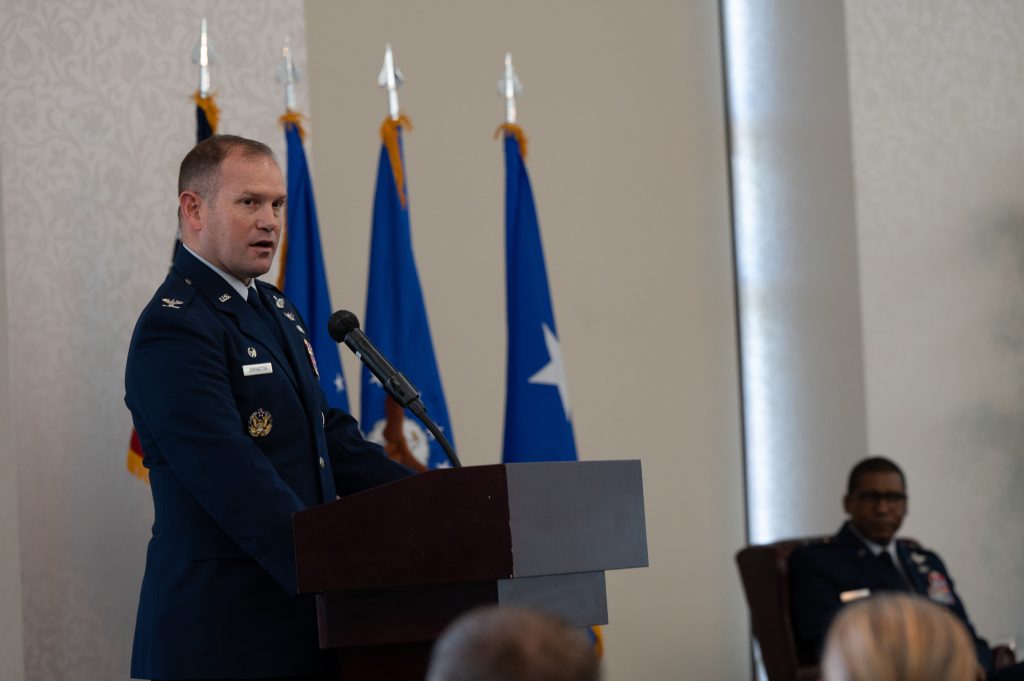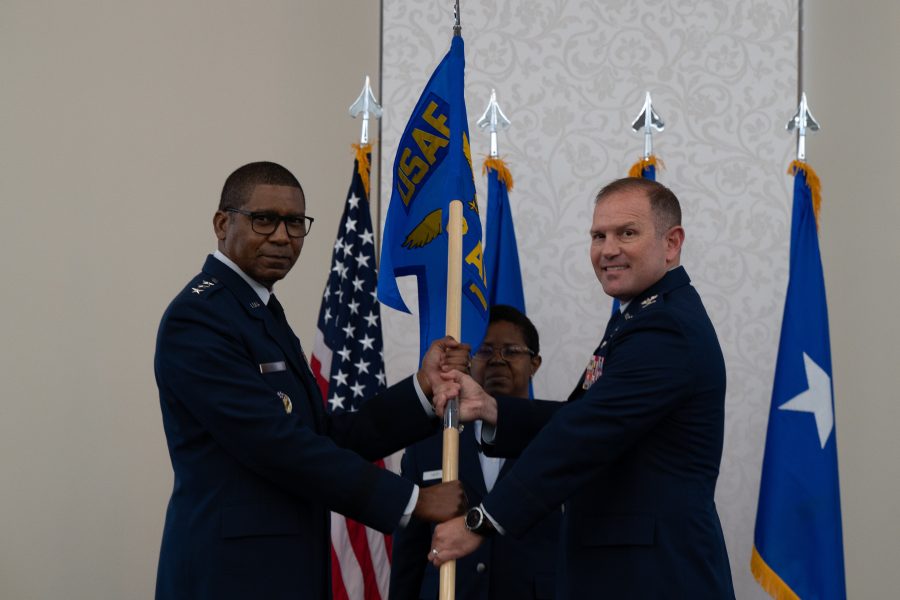The Air Force stood up one of six Air Task Forces—the 12th Air Task Force—at Scott Air Force Base, Ill., last week, starting the next wave of change for its deployment model.
In the past, the Air Force “crowdsourced” deployments, sending individuals or small groups of personnel down range to meet in the field. Air Task Forces are part of a new approach meant to create and strengthen teams of Airmen who train together before deploying, reviving a Cold War-era practice of building trust before facing a new theater.
“The way we organized, trained, and deployed over the past two decades to fight the war on terror was efficient but not effective to endure global competition,” Lt. Gen. Randall Reed, Air Mobility Command deputy commander said, as he handed the leadership of the 12th Air Task Force to Col. Gabriel Arrington.
The hope is that with more built-in familiarity amongst Airmen, ATFs will have better readiness and performance from the get-go.
Yet the task forces are only a midway point in a changing model. Last fall, the Air Force started deploying Expeditionary Air Base squadrons, drawing together Airmen from U.S. bases in the same region to train and deploy together as a team for setting up a base, establishing and supporting operations, and providing leadership.
Air Task Forces are the next step, centralizing the command and base support layers are one base. Service officials have said this model is a “pilot program” for future operations, setting the stage for entire Combat Wings that can pick up and deploy from a single base.
“The Airmen who make up this task force will be able to train and deploy with greater efficiency and be more mission-ready than ever before,” Arrington said in a release.

Scott is one of six sites selected to host Air Task Forces, along with:
- Davis-Monthan Air Force Base, Ariz.
- Joint Base San Antonio, Texas
- Dyess Air Force Base, Texas
- Fairchild Air Force Base, Wash.
- Seymour-Johnson Air Force Base, N.C.
These bases were chosen for their ability to accommodate the new forces, their proximity to training areas, and their readiness without additional construction. Like Arrington, other ATF leaders will also be colonels, handpicked by the service’s Chief of Staff, Gen. David Allvin.
Each ATF will have a command level with about an expeditionary A-Staff of about 50 people, as well as a Combat Air Base Squadron (CABS) to provide base operating support, mission generation force elements, and attached Mission Sustainment Teams (MST) to facilitate Agile Combat Employment, Air Force spokesperson Lt. Col. Phillip Ventura told Air & Space Forces Magazine.
But the overall size of each ATF will vary from hundreds to thousands of personnel. For instance, an ATF unit may include a single fighter squadron or several, depending on the specific demands of different missions.
Under the new Air Force Force Generation Model’s four phases of six months each, the first three task forces are set to deploy in October 2025—two to Central Command and one to Indo-Pacific Command. After six months, three new task forces will take their place in April 2026.
The previous system pulled Airmen from around 60 units at times, across more than a dozen different Air Force bases. ATFs streamline resources into only a handful of key components to make deployments simpler.
“The ATF model enables teams of roughly 400 Airmen to train together at two to four separate bases, and then come together as a larger team for collective training and certification during the six months prior to deployment,” said Ventura.
Another Air Task Force is likely standing up soon—to gear up for the upcoming 13th Air Task Force activation, a Combat Air Base Squadron (CABS) was rolled out at Luke Air Force Base, Ariz., last month as the main support hub. With 340 personnel stationed at Luke, Ellsworth Air Force Base, S.D., and McConnell Air Force Base, Kan., the 13th CABS will establish Combat Service Support Teams at each base. These teams will back up the ATF and are prepared to support up to 2,500 deployed personnel.
“This concept, apart from contributing to more predictable deployment schedules, could also help build better professional relationships among the team,” Senior Master Sgt. Olufemi A. Owolabi of the 13th CABS said in a release. “And when the time for deployment comes around, we are already familiar with the various Airmen from other Air Force specialties attached to the squadron from different bases, because we have been preparing together and taking care of each other from the beginning of the deployment cycle.”
